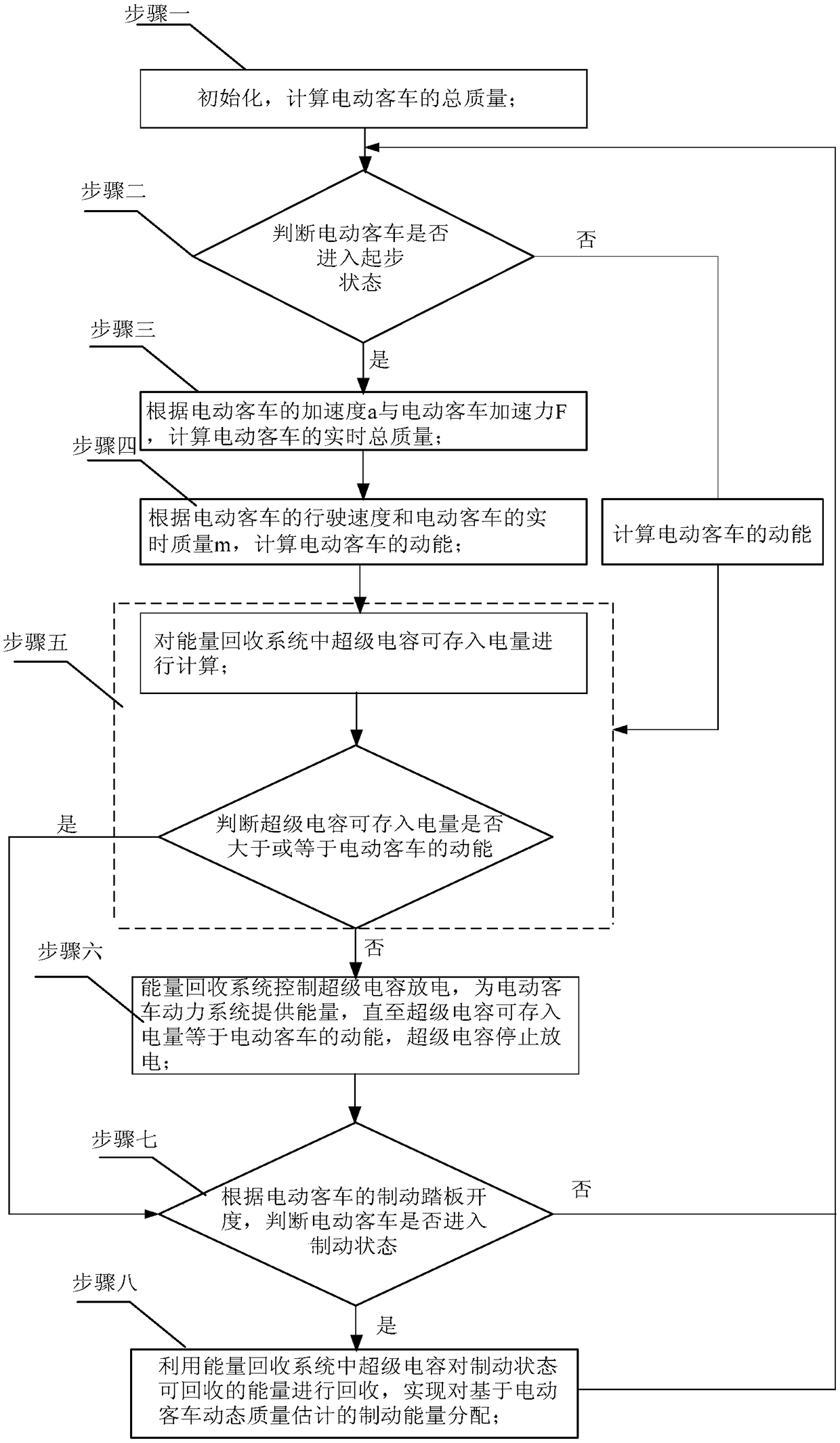Brake energy distribution method based on dynamic quality estimation of electric bus
An electric bus, mass estimation technology, applied in electric vehicles, electric braking systems, drive interaction and other directions, can solve the problems of low accuracy of braking residual energy evaluation and poor braking energy recovery efficiency, and achieve accurate real-time kinetic energy, The effect of improving recycling efficiency
- Summary
- Abstract
- Description
- Claims
- Application Information
AI Technical Summary
Problems solved by technology
Method used
Image
Examples
specific Embodiment approach 1
[0029] Specific implementation mode one: the following combination figure 1 Describe this embodiment, the brake energy distribution method based on the dynamic mass estimation of electric passenger car described in this embodiment, the specific steps of this method are:
[0030] Step 1. Initialize and calculate the total mass of the electric bus;
[0031] Step 2. According to the speed and acceleration signals of the electric bus, it is judged whether the electric bus has entered the starting state; if so, then perform step 2; otherwise, calculate the kinetic energy of the electric bus and perform step 5;
[0032] Step 3, according to the acceleration a of the electric bus and the acceleration force F of the electric bus, calculate the real-time total mass of the electric bus; and automatically update the real-time total mass of the electric bus;
[0033] Step 4, calculate the kinetic energy of the electric bus according to the driving speed of the electric bus and the real-t...
specific Embodiment approach 2
[0039] Specific embodiment two: This embodiment further explains the braking energy distribution method based on the dynamic mass estimation of the electric passenger car described in the first embodiment. In step one, the specific method for calculating the total mass of the electric passenger car is:
[0040] Step 11, using a torque sensor to collect the motor torque T of the electric bus; and calculating the acceleration force F of the electric bus in combination with the wheel radius r of the electric bus;
[0041] Step 12: Calculate the real-time total mass of the electric bus according to the calculated acceleration force F of the electric bus and the acceleration a of the electric bus measured by the acceleration sensor.
specific Embodiment approach 3
[0042] Specific embodiment three: this embodiment further explains the braking energy distribution method based on the dynamic mass estimation of the electric passenger car described in the second embodiment, the calculation of the acceleration force F of the electric passenger car in step one and the acceleration force F of the electric passenger car in step three The method is the same, both through the formula:
[0043] F=T / r (1)
[0044] Calculated to get.
PUM
 Login to View More
Login to View More Abstract
Description
Claims
Application Information
 Login to View More
Login to View More - R&D
- Intellectual Property
- Life Sciences
- Materials
- Tech Scout
- Unparalleled Data Quality
- Higher Quality Content
- 60% Fewer Hallucinations
Browse by: Latest US Patents, China's latest patents, Technical Efficacy Thesaurus, Application Domain, Technology Topic, Popular Technical Reports.
© 2025 PatSnap. All rights reserved.Legal|Privacy policy|Modern Slavery Act Transparency Statement|Sitemap|About US| Contact US: help@patsnap.com



